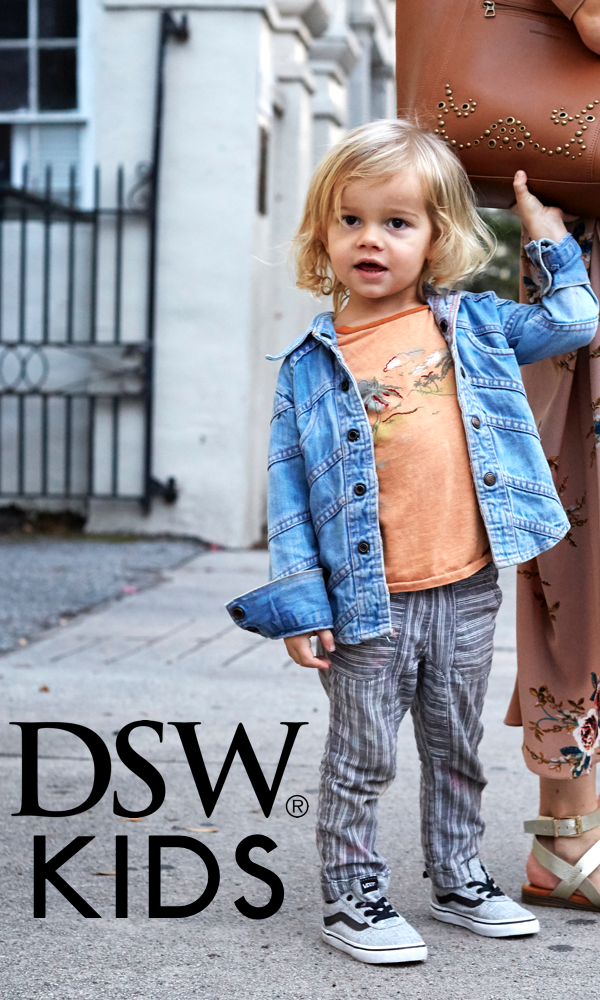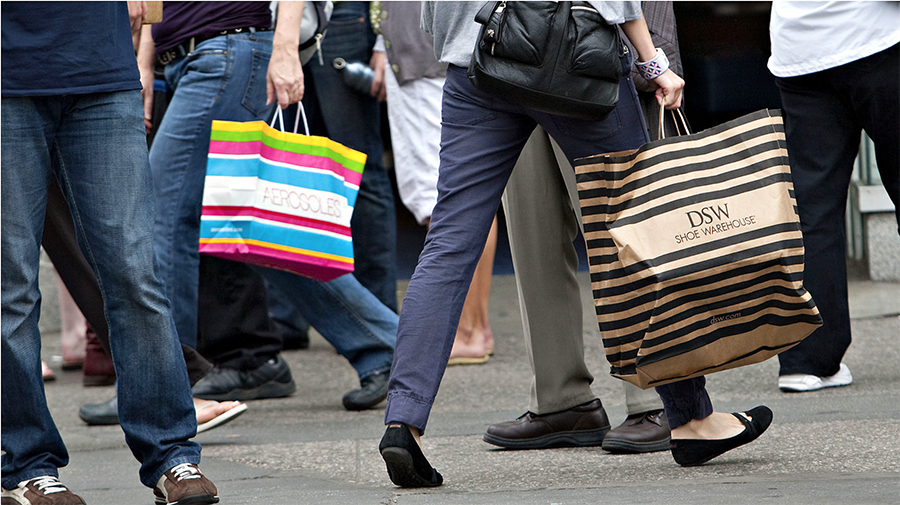By Thomas J. Ryan
<span style="color: #a1a1a1;">Designer Brands, the parent of the DSW chain, said it plans to prioritize its Top 50 brands as part of a rationalization of its vendor base while increasing emphasis on athleisure and kids that have been its strongest categories amid the pandemic.
Other plans include a continuation of a digital-first strategy developed as stores were shut down due to COVID-19 and an increased emphasis on value with continued uncertainty about retail conditions likely in the back half of the year.
The strategy update came as Designer Brands reported a net loss of $215.9 million, or $3.00 a share, in the first quarter ended May 2, against earnings of $31.2 million, or 40 cents, a year ago.
Net sales decreased 44.7 percent to $482.8 million. DSW started to experience a deterioration in store traffic beginning on March 6 before temporarily closing all North American stores on March 18. Digital demand was up 25 percent at DSW U.S. during the quarter, representing 50 percent of total revenue versus 22 percent last year.
The net loss reflected increased inventory markdown activity, and the resulting increase in inventory reserves of $84 million, higher shipping costs associated with an increase in online growth and the deleveraging of distribution and fulfillment and store occupancy expenses on lower sales volume. The markdowns helped support flat inventory units on hand at the quarter’s close versus last year.
Impairment charges of $112.5 million were also recorded as a result of the material reduction in sales and cash flow due to the temporary closures.
On an adjusted basis, the net loss came to $131.8 million, or $1.83, well above Wall Street’s consensus loss estimate of 60 cents. Shares of DSW slipped 7 cents on Thursday to $7.27 on the report.

Athleisure Mix Expected To Expand “Significantly”
The planned increase in athleisure and kids comes as both categories are performing relatively well amid the pandemic. The overall 42.3 percent same-store decline was due to steep losses in dress and seasonal.
Comparatively, comps in athleisure were only down 33.2 percent as consumers sought comfort and looked to stay active amid the pandemic. Said Roger Rawlins, CEO, on a conference call with analysts, “Athleisure has become a hot trend with people spending more time at home and taking more opportunities to exercise.”
Comps for kids in the quarter were down 14.7 percent “with parents always needing to replace product as kids grow,” added Rawlins. In the month of May in stores that were open, athleisure and kids’ comps were up 17 percent.
Rawlins noted that kids and athleisure were both “strong and growing categories” before the pandemic, and the company believes it will “continue to have a sizable amount of runway to further develop our position in these categories.”
At DSW, Rawlins noted that 80 percent of its 30 million customers are female, and he admitted that “we do not have a huge portion of their wallet when it comes to athletic.” He pointed to the number of women he sees “run in front of my home every day” as an example of the athletic opportunity and said DSW is engaged with vendors on attaining greater allocations. Rawlins said, “We’re excited about the conversations we’ve been having with the top athletic brands.”
At the same time, the Camuto division, which largely makes dress shoes under Vince Camuto, Jessica Simpson, J. Lo, and other brands, is working on developing more athleisure-type offerings. To expand Camuto’s athleisure collection, the company has “brought in resources that know that business better than, frankly, we do ourselves.” But he also stressed securing deeper assortments from athletic vendors for DSW was a foremost priority.
Said Rawlins, “The challenge we have is we have a large chunk of our business that’s seasonal and dress. And guess what, that’s not comping. But, we’re really proud of the progress that we’ve made with athletic, and as we go forward for the back half of this year and I think the foreseeable future, you’re going to see that penetration grow significantly.”
 Rationalizing The Vendor Base
Rationalizing The Vendor Base
The increased emphasis on athleisure and kids comes as DSW announced plans to accelerate its brand rationalization efforts to focus more on the Top 50 brands in footwear.
Rawlins said Designer Brands is finding that customers “enjoy the comfort of familiar brands” amid the pandemic. However, he also noted that consumers are more often starting their shopping journey online and often focus on top brands in their searches.
He said, “When you look at the Top 20 search terms on our website, 18 roughly of those Top 20 are these major brand names. And yes, sandals will show up there or yes, boots will show up there in winter, but [we’re] getting after these top brands, and we’re in the process of having these discussions with all of our top partners.”
DSW also expects to benefit from improved allocation access its athletic products as retailers are likely to exit the marketplace due to the pandemic.
“We’re going to be here,” said Rawlins. “And, so, they’re looking for places for them to grow, and we think we are that destination both online and in the physical locations.”
Emphasis On Value
Finally, Rawlins said DSW will be placing a greater emphasis on value in the months ahead through “some exciting branded closeout opportunities,” sharp pricing on existing merchandise, branded special makeups, and special offers within its rewards program.
DSW is also expected to continue to see more exclusive brands due to its 2018 acquisition of the Camuto business that will offer opportunities to provide value.. Said Rawlins, “Regardless of demographics, we know that everyday value is critical to customers’ footwear purchase decisions.”
The shift to a “digital-first model” in recent months will continue going forward. Officials noted that online growth has benefited from the ability to fulfill online orders from stores, as well as investments over the past few years in a website redesign, the DSW app launch, and adding clearance products to online assortments. Recently-introduced curbside pickup and contactless self-checkout also supported the online gains.
With stores starting to reopen on May 1, approximately 90 percent of its store base is now open, and nearly all stores are expected to reopen by the end of June. The majority of its Northeast store locations remain closed due to local restrictions. Sales at reopened stores are trending at 80 percent of the volume they were doing last year and have been steadily improving week-over-week.
The company amended its credit facility, increased borrowings and initiated cost-cutting initiatives to increase its cash position and preserve financial flexibility as a precaution against uncertainties presented by COVID-19. Cash totaled $250.9 million at the end of the quarter compared to $121.9 million for the same period last year.
Designer Brands also instituted new payment terms with vendors that better align payment plans with the sale of the inventory and is likewise in dialogues with landlords on go-forward rent structures that take into account store traffic risks.
Looking ahead, continued increased promotional activities may pressure gross margin levels for the remainder of the year. Cancellations and liquidation efforts are expected to lead to inventory being down substantially in the fall.
Rawlins said DSW is ramping up marketing “in a significant way” to stir demand, but he expects to be able to find inventory if business comes in stronger than expected. He noted that the strategy worked effectively during the 2008 recession. Rawlins said, “We’re going to manage inventories in a chase mode so that when we see it, we will get it. And, I think, that leveraging the relationships we have with these top brands is key to the approach that we take. So, I feel pretty good about that.”
Photos courtesy DSW
















